An insight into Product Led Growth
A short note on PLG
According to OpenView, Product Led Growth (PLG) is a growth strategy where the product itself acts as the primary driver of acquisition, retention, and expansion. This term was coined by Blake Bartlett of OpenView.
It is also one of the most spoken about strategies in the software industry.
Source: Pendo.io
Essentially, PLG is characterized by the customer trying out the product before making a decision to purchase it. However, in this case, the customer experiments with the product without the aid of a sales person(s).
In the past, if any company wanted to purchase a software, they would have to interact with the sales team of the software company, learn about the product and also do implementation if the customer agrees to buy it. This was very time consuming and the Time to Value (TTV) usually took months. However, with self service PLG, the TTV is now minutes! PLG companies always focus on the end user.
The most common example of PLG (product) is MS Office/Office 365
What are the benefits of Product Led Growth?
Reduced CAC -
If your product is good, customers normally spread the word about the product and new customers come in by word of mouth. Thus, new users get acquired via free or low cost options.
Better Products-
High volume self-service forces the product to constantly improve and deliver value on its own, without human support. Thus, increasing higher retention.
Capital Efficient Growth-
PLG enables growth through self-service and automation, which means lower sales, marketing and onboarding costs.
Bigger TAM-
The same PLG product can serve all market segments, from individuals and SMBs, all the way to large enterprises.
Some Well known PLG Companies
Datadog
Datadog is the archetypal example for SaaS PLG. 80% of Datadog’s revenue at $1B+ revenue comes from its $100k+ customers — but its Free edition is still where most customers begin
Slack
When Slack went public in 2019, only 8% of its revenue came from Free to Paid conversions. But, 500,000 organizations using their free plan were one of the top sources of awareness
Dropbox
Users were offered increased storage when they referred Dropbox to others. Additional storage was also offered when users shared Dropbox. They also implemented shareable links so users could send files to non-Dropbox users.
Airtable
The company made it easy for users/customers to try out their products for free without the aid of sales people. And the customers could also upgrade to premium features on their own.
PLG Metrics
Growth Rates - PLG businesses often have lower growth rates than their peers until they reach the$10M ARR mark—after which the inverse is true.
Net Dollar Retention - Net Dollar Retention (NDR) measures the rate of expansion minus contraction and churn within a customer base. Best-in-class PLG companies excel at land-and-expand. They demonstrate 130–150% NDR on an annualized basis.
Natural Rate of Growth - Tracking the natural rate of growth allows PLG companies to pinpoint the percentage of their recurring revenue that comes from organic channels and starts with the product.
Activated Sign Ups - Activation rate is an indicator of whether a user has actually experienced value after signing up for a product. Benchmarking data indicates a 20-40% activation rate is normal.
Product Qualified Accounts - Product qualified accounts (PQAs) help PLG companies identify high-value sales opportunities within their existing product users.
PLG Vs Sales Led Growth
In the typical sales-led growth model, the customer acquisition process has four steps: acquire, monetize, engage, then expand. In a product-led growth model, the engagement step happens before the monetization step. In the latter, more focus is given to user success which leads to higher revenue growth. Whereas, the former approach prioritizes revenue growth over user success.
HubSpot product lead Eric Peters explains that product-led growth reduces the need to hire people to handle different parts of the buyer’s journey. Interested buyers can purchase different features without a salesperson. Customers can watch tutorials or read articles instead of interacting with customer service.
Product-led growth companies prioritize building a product that acquires and onboards users because of its features and ease of use. If successful, those users stay onboard. They might pay for additional features or share the product with their network, enabling the company to grow because their product brings users into the flywheel
On the other hand, sales-led growth requires a network of salespeople and marketers to expand and increase profits. Sales-led growth requires creating a finely tuned machine. If one part stops working, the revenue pipeline dries out. If marketers fail to attract leads, salespeople will have no one to convert.
According to an article by Bain and Co, firms that rely primarily on PLG are growing faster than companies with limited or no PLG focus and are almost three times as likely to have gained market share in recent years. Some statistics from the article are presented below:
Disclaimer: Kindly note that I am sharing this only for our learning. Please do not make any investment decisions based on this article. The information therein has been sourced from various publicly available sources and I do not claim copyright of the same. I am open to receiving any form of feedback or constructive criticism for my work.
Sources:
https://openviewpartners.com/product-led-growth/
https://blog.hubspot.com/the-hustle/product-led-growth
https://www.bain.com/insights/what-it-really-takes-to-develop-product-led-growth/
https://productled.com/blog/product-led-growth-definition
https://www.saastr.com/20-interesting-plg-learnings-from-the-leaders-in-saas/
https://www.pendo.io/glossary/product-led-growth/#:~:text=The%20term%20%E2%80%9Cproduct%2Dled%20growth,had%20been%20around%20before%20that

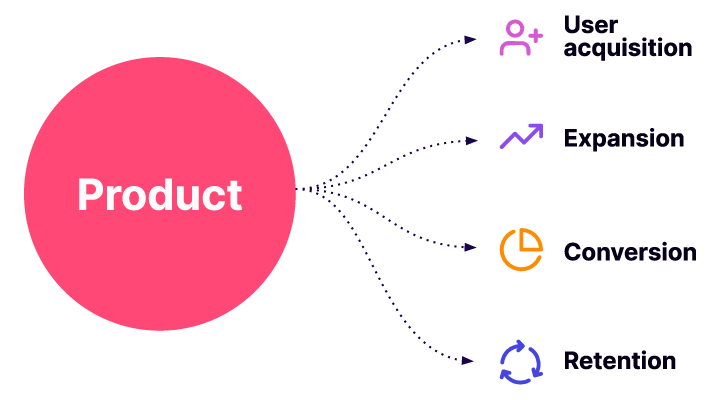
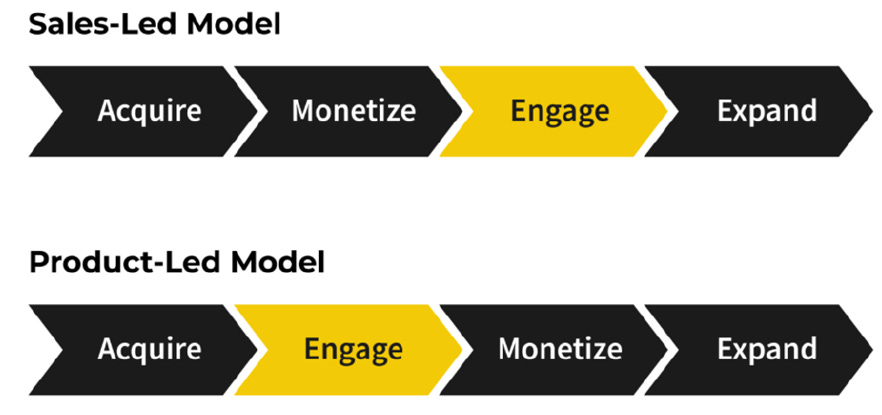
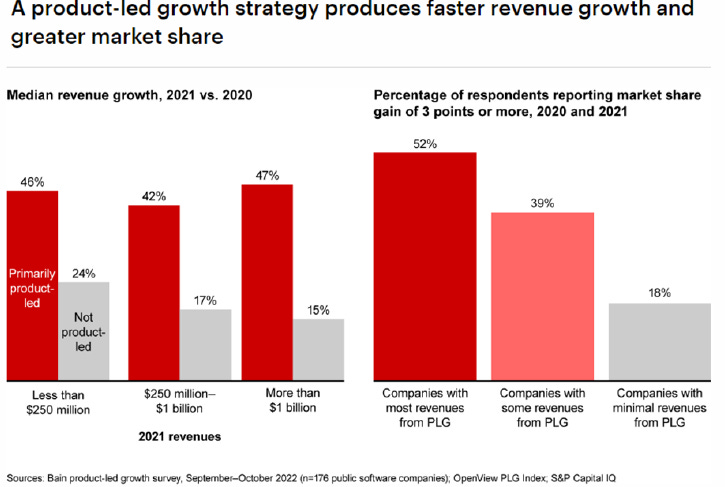
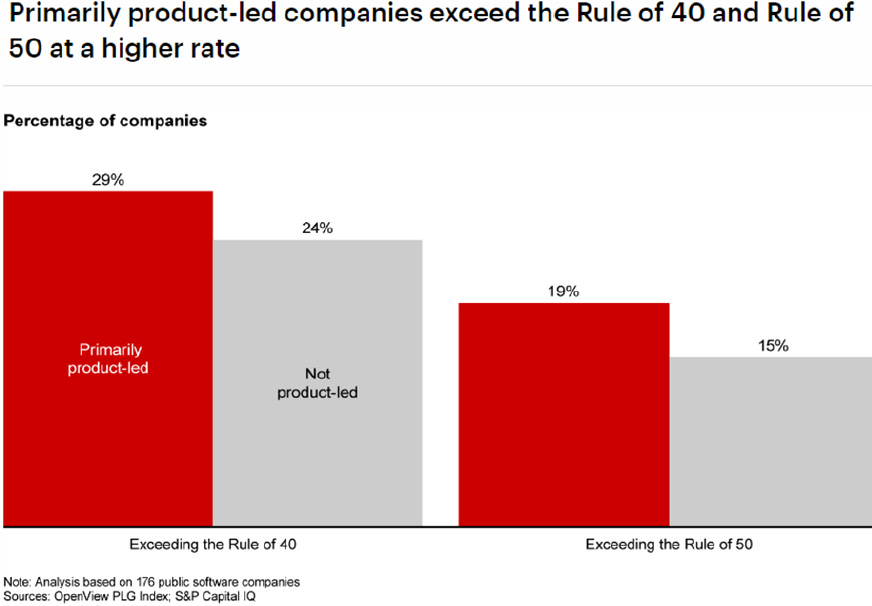
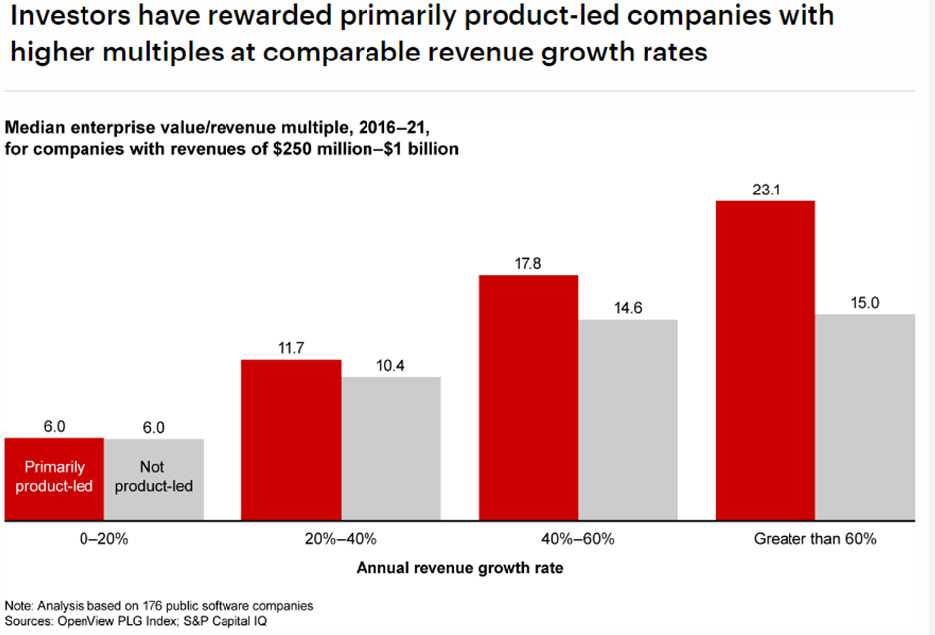
Well written article VIGNESH... Crisp and Sharp